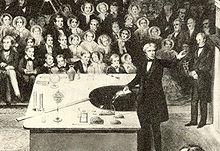
Phrenology or craniology is a pseudoscience that involves the measurement of bumps on the skull to predict mental traits. It is based on the concept that the brain is the organ of the mind, and that certain brain areas have localized, specific functions or modules. It was said that the brain was composed of different muscles, so those that were used more often were bigger, resulting in the different skull shapes. This led to the reasoning behind why everyone had bumps on the skull in different locations. The brain "muscles" not being used as frequently remained small and were therefore not present on the exterior of the skull. Although both of those ideas have a basis in reality, phrenology generalizes beyond empirical knowledge in a way that departs from science. The central phrenological notion that measuring the contour of the skull can predict personality traits is discredited by empirical research. Developed by German physician Franz Joseph Gall in 1796, the discipline was influential in the 19th century, especially from about 1810 until 1840. The principal British centre for phrenology was Edinburgh, where the Edinburgh Phrenological Society was established in 1820.

Sir Christopher WrenFRS was an English architect, astronomer, mathematician and physicist who was one of the most highly acclaimed architects in the history of England. Known for his work in the English Baroque style, he was accorded responsibility for rebuilding 52 churches in the City of London after the Great Fire in 1666, including what is regarded as his masterpiece, St Paul's Cathedral, on Ludgate Hill, completed in 1710.
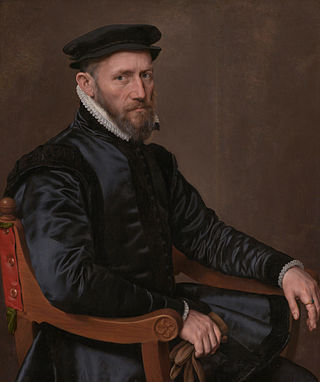
Sir Thomas Gresham the Elder was an English merchant and financier who acted on behalf of King Edward VI (1547–1553) and Edward's half-sisters, queens Mary I (1553–1558) and Elizabeth I (1558–1603). In 1565 Gresham founded the Royal Exchange in the City of London.

Phineas Taylor Barnum was an American showman, businessman and politician remembered for promoting celebrated hoaxes and founding the Ringling Bros. and Barnum & Bailey Circus with James Anthony Bailey.

Johanna Maria Lind (Madame Goldschmidt) (6 October 1820 – 2 November 1887) was a Swedish opera singer, often called the "Swedish Nightingale". One of the most highly regarded singers of the 19th century, she performed in soprano roles in opera in Sweden and across Europe, and undertook an extraordinarily popular concert tour of the United States beginning in 1850. She was a member of the Royal Swedish Academy of Music from 1840.

The Royal Institution of Great Britain is an organisation for scientific education and research, based in the City of Westminster. It was founded in 1799 by the leading British scientists of the age, including Henry Cavendish and its first president, George Finch. Its foundational principles were diffusing the knowledge of, and facilitating the general introduction of useful mechanical inventions and improvements, as well as enhancing the application of science to the common purposes of life.

Gresham College is an institution of higher learning located at Barnard's Inn Hall off Holborn in Central London, England. It does not accept students or award degrees. It was founded in 1597 under the will of Sir Thomas Gresham, and hosts over 140 free public lectures every year. Since 2001, all lectures have also been made available online. The current Provost is Professor Martin Elliott.
Barnum is an American musical with a book by Mark Bramble, lyrics by Michael Stewart, and music by Cy Coleman. It is based on the life of showman P. T. Barnum, covering the period from 1835 through 1880 in America and major cities of the world where Barnum took his performing companies. The production combines elements of traditional musical theater with the spectacle of the circus. The characters include jugglers, trapeze artists and clowns, as well as such real-life personalities as Jenny Lind and General Tom Thumb.

George Combe was a Scottish lawyer and a spokesman of the phrenological movement for over 20 years. He founded the Edinburgh Phrenological Society in 1820 and wrote The Constitution of Man (1828). After marriage in 1833, Combe devoted his later years to promoting phrenology internationally.

Lisa Anne Jardine was a British historian of the early modern period.
Joice Heth was an African-American woman who was exhibited by P.T. Barnum with the false claim that she was the 161-year-old nursing mammy of George Washington. Her exhibition under these claims, and her public autopsy, gained considerable notoriety.
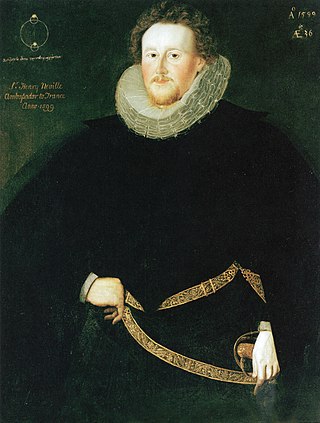
Sir Henry Neville was an English courtier, politician and diplomat, noted for his role as ambassador to France and his unsuccessful attempts to negotiate between James I of England and the Houses of Parliament. In 2005, Neville was put forward as a candidate for the authorship of Shakespeare's works.
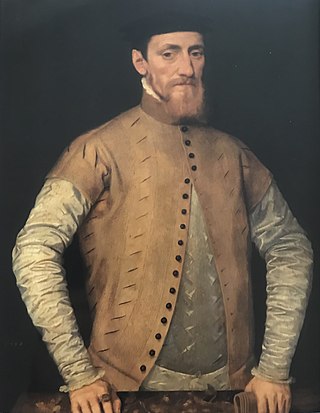
Sir John Gresham was an English merchant, courtier and financier who worked for King Henry VIII of England, Cardinal Wolsey and Thomas Cromwell. He was Lord Mayor of London and founded Gresham's School. He was the brother of Sir Richard Gresham.
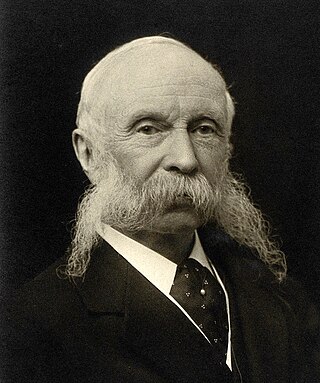
Sir James Crichton-Browne MD FRS FRSE was a leading Scottish psychiatrist, neurologist and eugenicist. He is known for studies on the relationship of mental illness to brain injury and for the development of public health policies in relation to mental health. Crichton-Browne's father was the asylum reformer Dr William A.F. Browne, a prominent member of the Edinburgh Phrenological Society and, from 1838 until 1857, the superintendent of the Crichton Royal at Dumfries where Crichton-Browne spent much of his childhood.
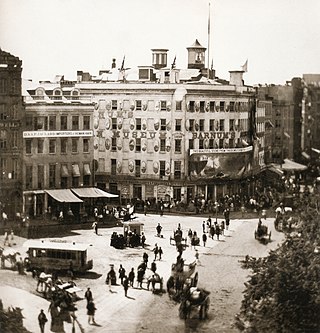
Barnum's American Museum was a dime museum located at the corner of Broadway, Park Row, and Ann Street in what is now the Financial District of Manhattan, New York City, from 1841 to 1865. The museum was owned by famous showman P. T. Barnum, who purchased Scudder's American Museum in 1841. The museum offered both strange and educational attractions and performances. Some were extremely reputable and historically or scientifically valuable, while others were less so.
Joshua Toulmin Smith was a British political theorist, lawyer and local historian of Birmingham.

The Edinburgh Phrenological Society was founded in 1820 by George Combe, an Edinburgh lawyer, with his physician brother Andrew Combe. The Edinburgh Society was the first and foremost phrenology grouping in Great Britain; more than forty phrenological societies followed in other parts of the British Isles. The Society's influence was greatest over its first two decades and declined in the 1840s; the final meeting was recorded in 1870.

Sir Roderick Castle Floud FBA is a British economic historian and a leader in the field of anthropometric history. He has been provost of the London Guildhall University, vice-chancellor and president of the London Metropolitan University, acting dean of the School of Advanced Study at the University of London, and provost of Gresham College (2008–2014). He is the son of Bernard Floud MP.

Dr William Alexander Francis Browne (1805–1885) was one of the most significant British asylum doctors of the nineteenth century. At Montrose Asylum (1834–1838) in Angus and at the Crichton Royal in Dumfries (1838–1857), Browne introduced activities for patients including writing, group activity and drama, pioneered early forms of occupational therapy and art therapy, and initiated one of the earliest collections of artistic work by patients in a psychiatric hospital. In an age which rewarded self-control, Browne encouraged self-expression and may therefore be counted alongside William Tuke, Vincenzo Chiarugi and John Conolly as one of the pioneers of the moral treatment of mental illness. Sociologist Andrew Scull has identified Browne's career with the institutional climax of nineteenth century psychiatry.
"Browne was one of the reformers of the asylum care of the insane whose improvements and innovations were chronicled in his annual reports from The Crichton Royal Institution, but who in addition published almost on the threshold of his career a sort of manifesto of what he wished to see accomplished...." Richard Hunter and Ida Macalpine (1963) Three Hundred Years of Psychiatry 1535–1860, page 865.

The Greatest Showman is a 2017 American biographical musical drama film directed by Michael Gracey from a screenplay written by Jenny Bicks and Bill Condon, and a story by Bicks. The film stars an ensemble cast led by Hugh Jackman, Zac Efron, Michelle Williams, Rebecca Ferguson, and Zendaya. Featuring nine original songs by Benj Pasek and Justin Paul and a score composed by John Debney and Joseph Trapanese, the film is a heavily fictionalized depiction of the life of P. T. Barnum, a showman and entertainer, and his creation of the Barnum & Bailey Circus and the lives of its star attractions.
